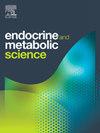Sodium-glucose cotransporter 2 inhibitors in chronic kidney disease: A review of current evidence and clinical implications
Q3 Medicine
引用次数: 0
Abstract
Background
Chronic kidney disease (CKD) is a progressive condition affecting millions worldwide, leading to substantial morbidity, mortality, and healthcare burden. While traditional treatments such as angiotensin-converting enzyme (ACE) inhibitors and angiotensin receptor blockers (ARBs) have been the cornerstone of CKD management, newer therapeutic approaches are needed to slow disease progression and improve outcomes. Sodium-glucose cotransporter 2 (SGLT2) inhibitors, initially developed as antihyperglycemic agents, have demonstrated significant renoprotective and cardioprotective effects beyond glucose control.
Objective
This review aims to evaluate the current evidence on the efficacy, safety, and clinical implications of SGLT2 inhibitors in CKD, highlighting their mechanisms of action, benefits, limitations, and future research directions.
Methods
A comprehensive literature search was conducted in PubMed, Google Scholar, and Medline using keywords related to SGLT2 inhibitors, CKD, and renal outcomes with no time limit. Studies included randomized controlled trials, cohort studies, and case-control studies examining the effects of SGLT2 inhibitors on renal and cardiovascular outcomes in CKD patients. The risk of bias was assessed using standard tools such as the Newcastle-Ottawa Scale and the Cochrane Risk of Bias Tool.
Results
Clinical trials have demonstrated that SGLT2 inhibitors, including empagliflozin, canagliflozin, dapagliflozin, and ertugliflozin, significantly reduce CKD progression, lower albuminuria, and decrease the risk of cardiovascular events and all-cause mortality. These effects are observed in both diabetic and non-diabetic populations. Additionally, SGLT2 inhibitors exhibit renoprotective mechanisms such as reducing glomerular hyperfiltration, modulating tubuloglomerular feedback, and exerting anti-inflammatory and antifibrotic properties. However, potential adverse effects, including an initial decline in estimated glomerular filtration rate (eGFR), an increased risk of euglycemic diabetic ketoacidosis, and urinary tract infections, necessitate careful patient selection and monitoring. Emerging studies also explore the role of machine learning in optimizing SGLT2 inhibitor use for personalized treatment approaches.
Conclusion
SGLT2 inhibitors have emerged as a transformative addition to CKD management, offering substantial renal and cardiovascular benefits. Despite safety concerns, their advantages outweigh the risks, warranting broader clinical implementation. Future research should focus on refining patient selection, optimizing treatment combinations, and leveraging data science to enhance therapeutic outcomes in CKD patients.
钠-葡萄糖共转运蛋白2抑制剂在慢性肾脏疾病中的作用:当前证据和临床意义的综述
慢性肾脏疾病(CKD)是一种影响全球数百万人的进行性疾病,导致大量发病率、死亡率和医疗负担。虽然血管紧张素转换酶(ACE)抑制剂和血管紧张素受体阻滞剂(ARBs)等传统治疗方法一直是CKD治疗的基石,但需要新的治疗方法来减缓疾病进展并改善预后。钠-葡萄糖共转运蛋白2 (SGLT2)抑制剂最初是作为抗高血糖药物开发的,已经证明了除血糖控制外的显著的肾保护和心脏保护作用。目的本综述旨在评价SGLT2抑制剂治疗CKD的有效性、安全性和临床意义,重点介绍其作用机制、益处、局限性和未来的研究方向。方法在PubMed、谷歌Scholar和Medline上进行全面的文献检索,检索与SGLT2抑制剂、CKD和肾脏结局相关的关键词,无时间限制。研究包括随机对照试验、队列研究和病例对照研究,研究SGLT2抑制剂对CKD患者肾脏和心血管预后的影响。偏倚风险采用标准工具进行评估,如纽卡斯尔-渥太华量表和Cochrane偏倚风险工具。临床试验表明,SGLT2抑制剂,包括恩格列净、卡格列净、达格列净和厄图格列净,可显著减少CKD进展,降低蛋白尿,降低心血管事件和全因死亡率的风险。这些影响在糖尿病和非糖尿病人群中都可以观察到。此外,SGLT2抑制剂表现出肾保护机制,如减少肾小球高滤过,调节小管肾小球反馈,发挥抗炎和抗纤维化特性。然而,潜在的不良反应,包括初始估计肾小球滤过率(eGFR)的下降,正糖糖尿病酮症酸中毒和尿路感染的风险增加,需要仔细选择和监测患者。新兴研究还探索了机器学习在优化SGLT2抑制剂用于个性化治疗方法中的作用。结论:sglt2抑制剂已成为CKD治疗的变革性补充,提供了实质性的肾脏和心血管益处。尽管存在安全性问题,但它们的优势大于风险,值得更广泛的临床应用。未来的研究应侧重于改进患者选择,优化治疗组合,并利用数据科学来提高CKD患者的治疗效果。
本文章由计算机程序翻译,如有差异,请以英文原文为准。
求助全文
约1分钟内获得全文
求助全文
来源期刊

Endocrine and Metabolic Science
Medicine-Endocrinology, Diabetes and Metabolism
CiteScore
2.80
自引率
0.00%
发文量
4
审稿时长
84 days
 求助内容:
求助内容: 应助结果提醒方式:
应助结果提醒方式:


